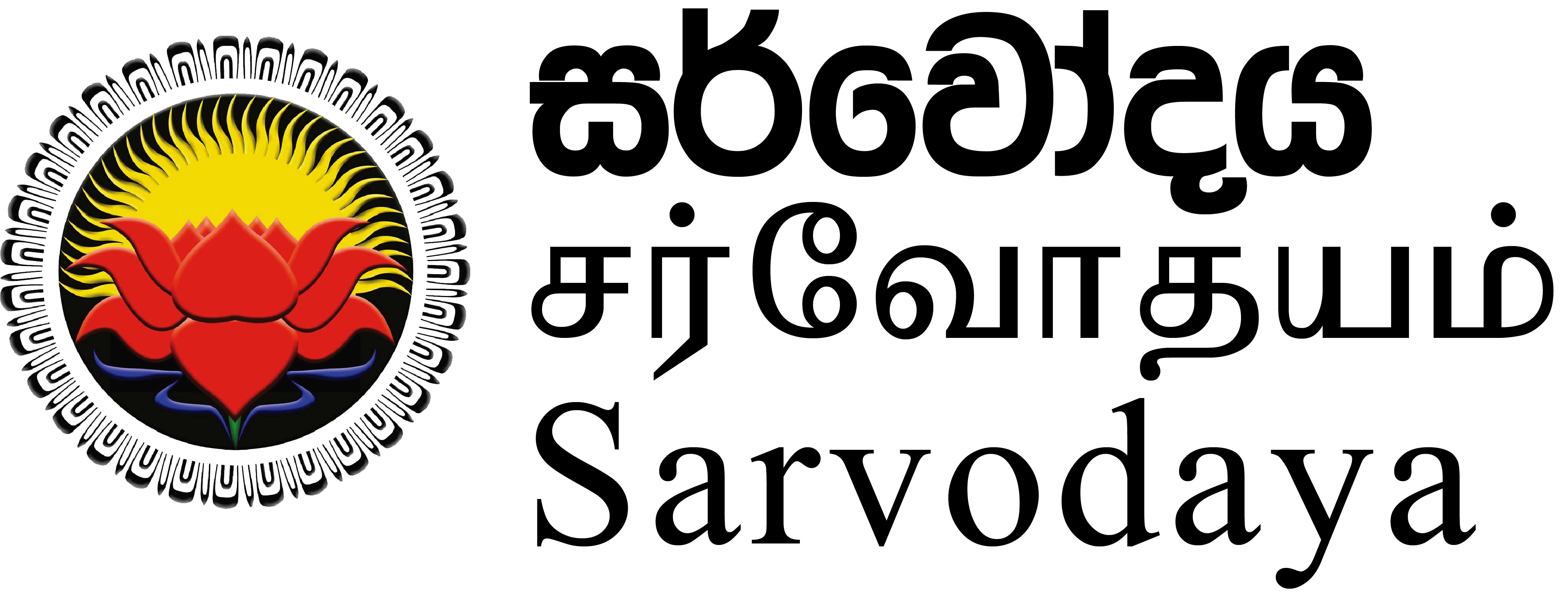_From Sarvodaya President Dr. A.T. Ariyaratne_
Full Itemized Report (February) – this PDF breaks expenditures down by district.
People’s participation in development has been a key principle in Sarvodaya’s work since its evolution and it continues as such in Sarvodaya’s tsunami response. When the tsunami hit, Sarvodaya’s Headquarters was transformed into a disaster relief centre. Sarvodaya responded immediately in the form of cooked food, medical aid temporary make-shift shelters, dry rations and utensils.
Sarvodaya informed unaffected district centres to go out to affected districts with the needed resources. Leaders of the movement, including Dr. A.T. Ariyaratne, went out to the affected districts and met with the regional co-ordinators, government officials and political leaders to organise Sarvodaya’s response strategy.
Sarvodaya’s biggest strength has been people’s voluntary participation. Volunteers in unaffected villages have gained transferable skills and insight into the conditions and life circumstances of people in the displaced people’s camp. This allows them not only to effectively respond to displaced people and their vulnerability, but also promotes spiritual growth within themselves and to connect and support other volunteers and displaced people in other villages.
Cash for work programmes are running and initiatives in water and sanitation are also being carried out.
Sarvodaya’s response is currently in phase two of the 5R (Relief, Rehabilitation, Reconstruction, Reconciliation and Reawakening) programme, which will address preventive care, trauma management, income support, re-settlement and later rehabilitation-related response commitments. In the last month Sarvodaya has reached close to about a quarter of all affected people.
Sarvodaya’s response in terms of planning; resource allocation; information availability; accountability and transparency of collections and deliveries; effectiveness of identification of needs, mobilisation of human resources; identification of issues; priority of action responses; effectiveness of resource utilisation and identification of medium term issues and leadership action are all assessed as amongst the best in operation within the island. However, Sarvodaya has one of the smallest budgets and relies heavily on volunteers. As the 12 point program and special projects are implemented and reports are received from the field the website will be updated.
| Districts | Services for camps/No. Of Villages | Beneficiaries | No. of camps managed by Sarvodaya. | Beneficiaries |
|---|---|---|---|---|
| Total (14) | 340 | 220685 | 34 | 41447 |
2. Medical Camps
| Date | No. of Medical Camps | Beneficiaries |
|---|---|---|
| 2004.12.26 -2005.01.10 | 19 | 5253 |
3. Cleaning of Wells
| Date | No. of Cleaned Wells | No. of Volunteers |
|---|---|---|
| 2005.01.03 -2005.01.22 | 1034 | 5170 |
4. Legal camps
| Date | Provided Services – Beneficiary | |||
|---|---|---|---|---|
| Birth Certificates | Marriage Certificates | Death Certifcates | National Identity Cards | |
| 2005.01.12-2005.01.20 | 6173 | 205 | 108 | 1056 |
5. Spiritual Programmes
| Date | No. of Programmes | No. of Problems | Beneficiaries |
|---|---|---|---|
| 2005.01.04-2005.01.14 | 17 | 1685 | 8425 |
6. Reawakening Programme for Sarvodaya villages – No. of camps.
| No. of Camps | No. of volunteers resident in camps |
|---|---|
| 98 | Approximately 900 |
7. Destroyed Houses & Common Buildings in Sarvodaya villages.
| No. of Service Villages | No. of Houses | No. of common Buildings | ||
|---|---|---|---|---|
| Fully destroyed | Partially destroyed | Fully destroyed | Partly destroyed | |
| 226 | 17844 | 11129 | 154 | 90 |
8. Value of Relief Services rendered through 14 Sarvodaya District Centres.
| From Headquarters-Moratuwa | Rs. 39,464,214 |
|---|---|
| From Other District Centres | Rs. 5,152,712 |
| Total | Rs. 44,616,926 |
| Beneficiaries (From 34 Sarvodaya Camps) | 41447 |
9. Details of Relief Services provided by Sarvodaya District Centres
| No. of Districts | 14 |
|---|---|
| Services provided in camps and villages | 340 camps |
| Beneficiaries | 220685 |
